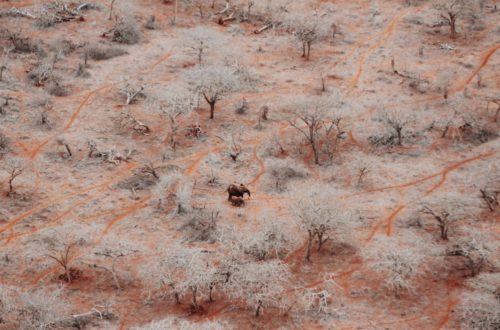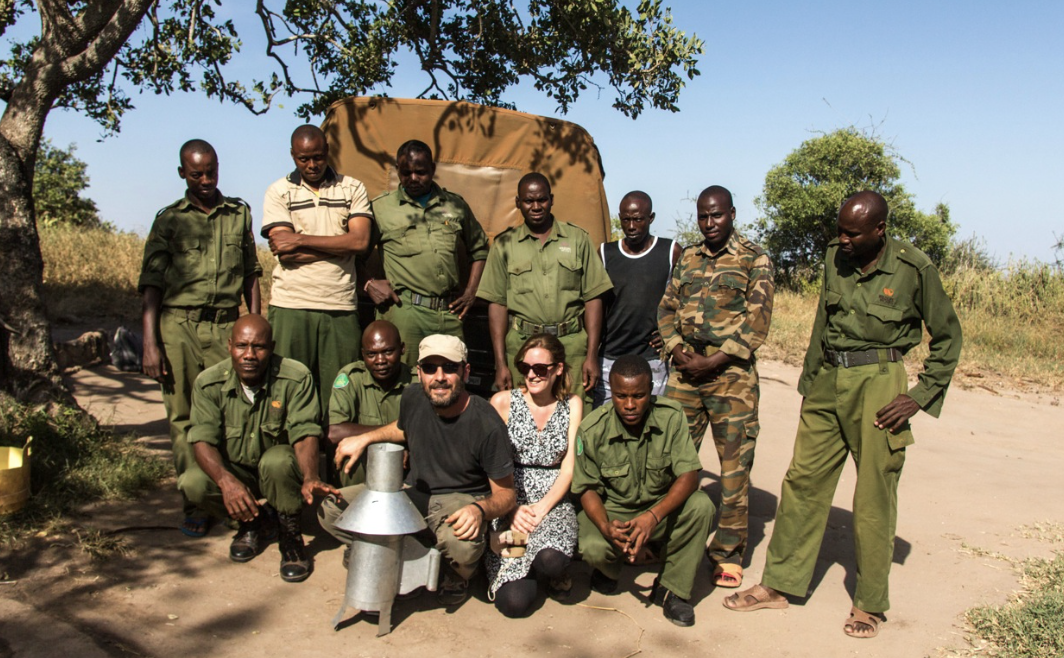Violet: Weaving Herself a More Sustainable Future
A good life is like weaving; energy is created in the tension. The struggle, each pull and tug builds on the next to create the perfect basket. Weaving baskets is a tradition in native Taita culture, a tribe of people living in the hills in South Eastern Kenya. Violet Simba is part of the Basket Weaver Women Group in Jora, a village in the shadow of Mount Kasigau that is within the Wildlife Works Kasigau Corridor REDD+ project area. Violet is one of 30 weavers in the Jora group who have turned to weaving Sisal baskets in order to be less dependent on subsistence agriculture.
 Violet Simba, a traditional basket weaver in Jura, Kenya
Violet Simba, a traditional basket weaver in Jura, Kenya
Jora Women Basket Weaver Group is one of 26 local craft organizations that are represented by Hadithi Craft Support Community Based Organization (CBO). Hadithi helps to financially empower about 500 local women through making connections to external markets, building capacity and improving product quality of local craft groups. Wildlife Works supports Hadithi by providing facilities and logistical assistance. This work helps to conserve threatened forests, home to elephants and cheetahs, by providing an alternative income to slash and burn agriculture and poaching of valuable wildlife.
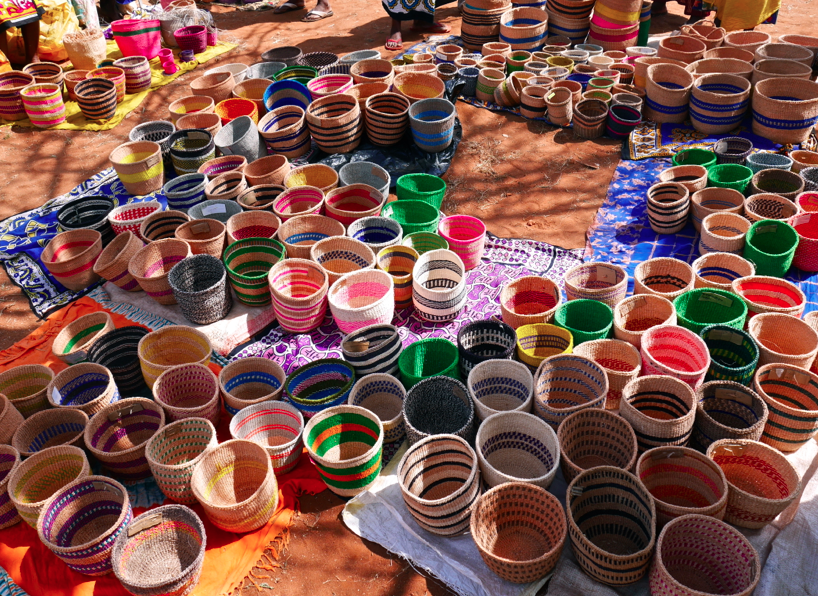 Violet, a widow with eight children and a grandmother to 11, farmed maize all her life. Working the land became increasingly difficult for her, in an already challenging semi-arid climate, as she grew older and without the support of her husband. In 2010, she abandoned farming and began weaving baskets. She learnt the art of weaving from the chairlady of the Jora Basket Weaver Women Group, Hilda Mghami who runs teaching sessions in the village.
Violet, a widow with eight children and a grandmother to 11, farmed maize all her life. Working the land became increasingly difficult for her, in an already challenging semi-arid climate, as she grew older and without the support of her husband. In 2010, she abandoned farming and began weaving baskets. She learnt the art of weaving from the chairlady of the Jora Basket Weaver Women Group, Hilda Mghami who runs teaching sessions in the village.
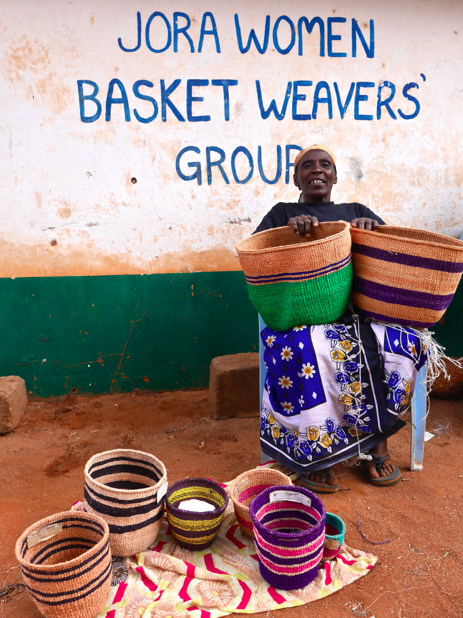 Violet has been weaving as her main source of income since 2010
Violet has been weaving as her main source of income since 2010
Since joining the weaving group, Violet has made more than 800 baskets using traditional techniques. She uses white sisal as her raw material, then adds in colors obtained from natural sources, such as charcoal, tree leaves, and black or red soil, as well as commercial dye colors.
“The colors that I love weaving the most are red and green, they make me feel good and give me motivation,” she says. In order to create her colors, Violet boils water and dye and then dips the white sisal into the mixture. The colored sisal is left to dry for a few minutes and then she starts weaving. It takes her five days to weave a big basket, three days to weave a medium basket and one day to weave a small basket.
Violet is now 65 years old and basket weaving is her main source of income. She uses the money she gets to pay school fees and buy clothes for her youngest child who is enrolled in a youth polytechnic school, a technical institution that is cheaper than regular secondary school in Kenya. This son is the only child of hers who she has been able to fund beyond primary school.
The Jora Basket Weaver Women Group meets once a week on Thursdays. Violet loves this community. During the weekly meeting the women chat about how to improve their weaving, share problems relating to their age and discuss their future plans.
Violet’s main challenge is that with her age and after decades of backbreaking farming, she experiences chest problems while weaving. Also, she and her fellow weavers struggle with not having a constant market for their baskets. Despite these challenges Violet has future plans, she hopes basket weaving will take her into her old age. “My wish is for God to grand me more healthy days on Earth. I’m thankful to the support Wildlife Works are giving us,” she added.
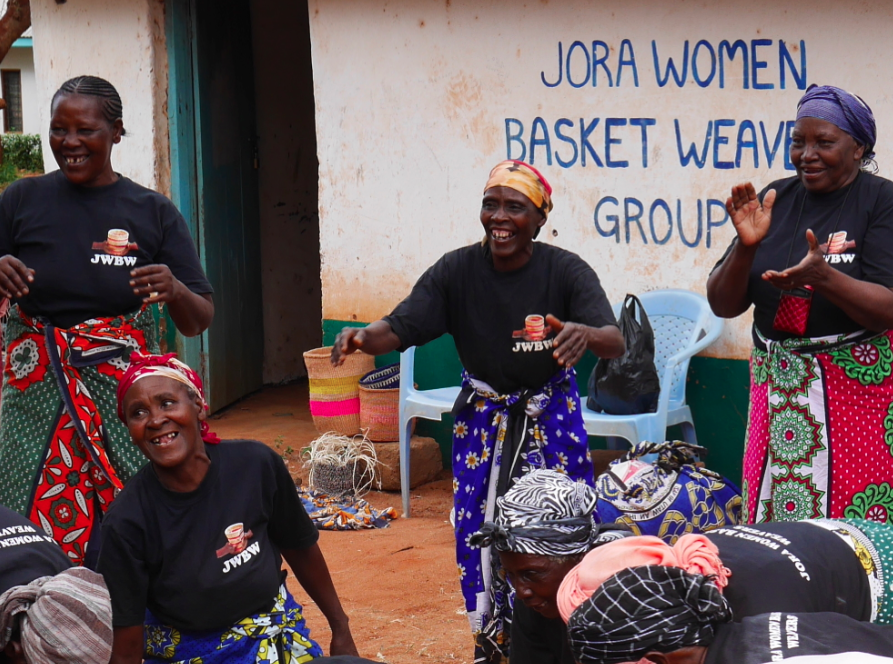 Violet and some of her fellow weavers dance together at a meeting of the Jura Women Basket Weaver Group
Violet and some of her fellow weavers dance together at a meeting of the Jura Women Basket Weaver Group


